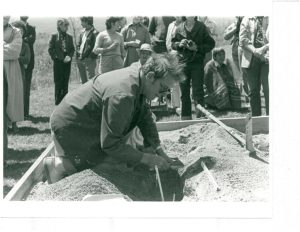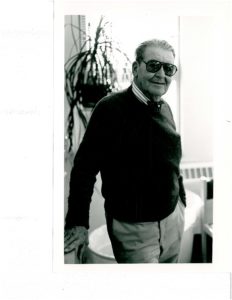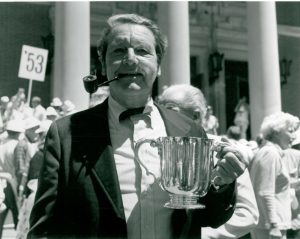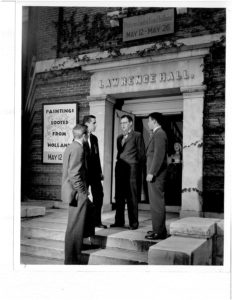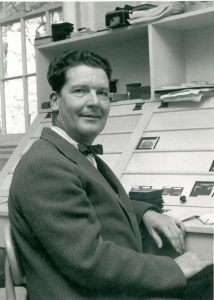 I doubt that upon hearing mention of Prof. Stoddard many Williams alumni from our era, will think first of his important scholarship in engaged sculpture of medieval French churches or his parallel interest in modern architecture. Nor will many be reminded immediately of his broad service as advisor to pre-architecture students, administration counsel on architecture and campus design, or even as campus architectural historian. No, memory of Stoddard’s relaxed, colorful persona supersedes that of his academic résumé. His strong presence as an active participant in the life of the campus made him appear to be a component of the romantic and beautiful collegiate landscape itself – an Ur-Yankee professor who bridged an undefinable gap between faculty and students. A knowing Williams alumnus, Stoddard’s presence could be expected, rain or shine, not only at Saturday football games but also at weekday contests in other sports and his mere appearance at the Gurgle tapping ceremony and other difficult-to-describe annual Williams events seemed sufficiently legitimizing.
I doubt that upon hearing mention of Prof. Stoddard many Williams alumni from our era, will think first of his important scholarship in engaged sculpture of medieval French churches or his parallel interest in modern architecture. Nor will many be reminded immediately of his broad service as advisor to pre-architecture students, administration counsel on architecture and campus design, or even as campus architectural historian. No, memory of Stoddard’s relaxed, colorful persona supersedes that of his academic résumé. His strong presence as an active participant in the life of the campus made him appear to be a component of the romantic and beautiful collegiate landscape itself – an Ur-Yankee professor who bridged an undefinable gap between faculty and students. A knowing Williams alumnus, Stoddard’s presence could be expected, rain or shine, not only at Saturday football games but also at weekday contests in other sports and his mere appearance at the Gurgle tapping ceremony and other difficult-to-describe annual Williams events seemed sufficiently legitimizing.
I think Whit’s final assignment in his Modern Architecture course – the design a small get-away house for oneself – sank the career hook. To senior art majors applying to graduate programs in architecture, Whit’s advice and support were invaluable. It was only at that point we learned how widely known and respected he and the redoubtable art department he helped build actually were. Eventually it would become clear that decent grades and a strong reference letter from Whitney Stoddard guaranteed admission to just about any architecture school in North America. When I registered with Charles Moore, then dean of the Yale School of Architecture, he blithely crossed out my elective selection of Vincent Scully’s fabled Introduction to Modern Architecture saying “You’ve already done that with Whit Stoddard.” Nothing more to be said.
This past October (2017), I organized for friends a canal barge-based tour of Romanesque and Gothic monuments in western Burgundy to which Stoddard had introduced me in his Medieval Art course over fifty years ago. The names of towns and buildings came back easily – Autun, Auxerre, Beaune, Dijon, Fontenay, Paray-le-Monial, Sens, Vezelay, etc. – and it was wonderful to actually see them all for the first time. I’m happy to report that Whit’s insightful book, Monastery and Cathedral in France (1966), remains current and apt for use by the 21st Century pilgrim.
Barton Phelps
Photos provided by Williams College archivist Katie Nash
